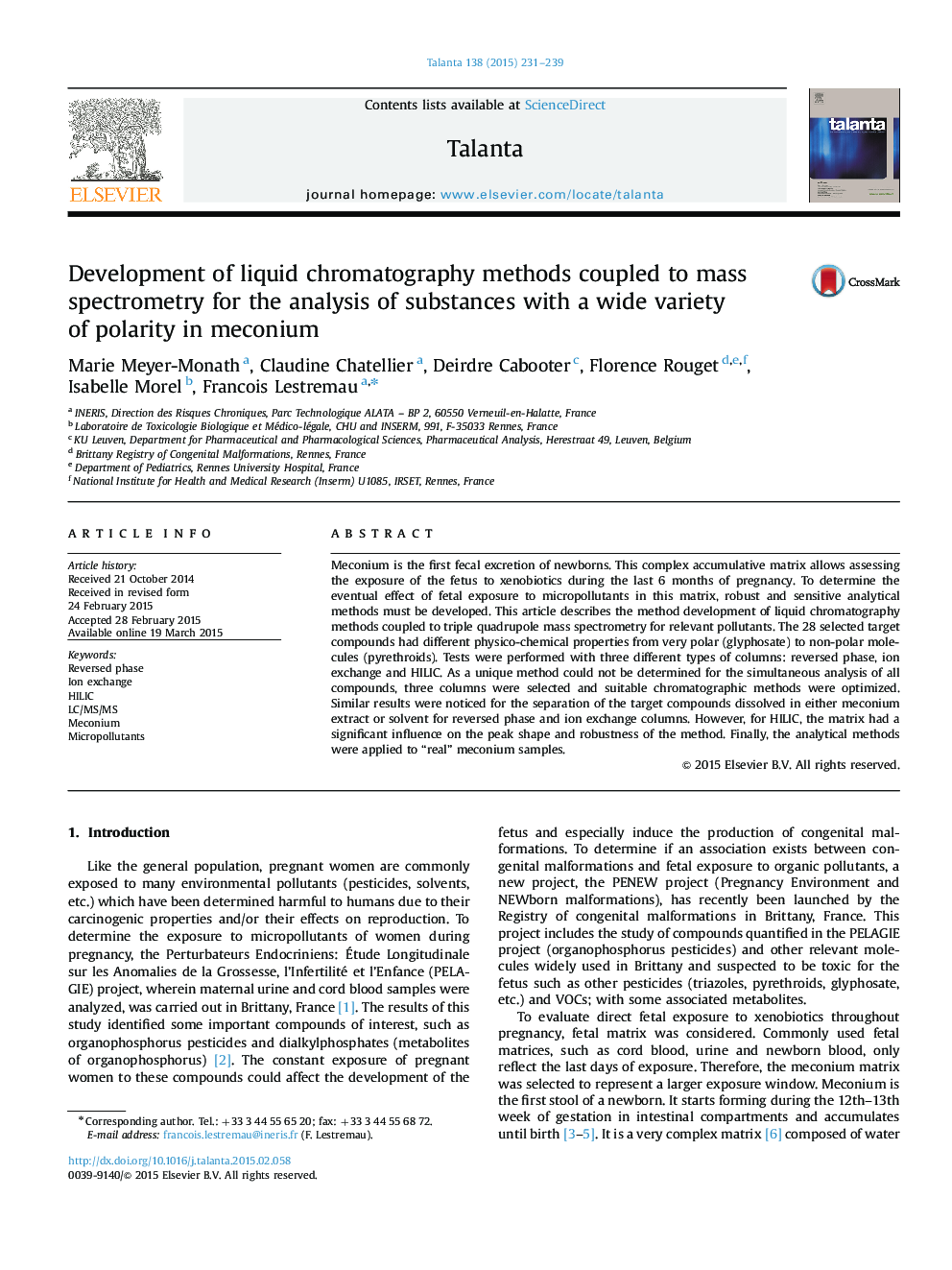| کد مقاله | کد نشریه | سال انتشار | مقاله انگلیسی | نسخه تمام متن |
|---|---|---|---|---|
| 1243355 | 1495797 | 2015 | 9 صفحه PDF | دانلود رایگان |
• Meconium is a fetal matrix which integrates a large exposure window to xenobiotics.
• Analysis of 28 target compounds with a large range of polarity.
• Comparison of six columns for analytical method development by LC/MS/MS in meconium.
• Optimization of HILIC conditions for polar compounds in meconium analysis.
Meconium is the first fecal excretion of newborns. This complex accumulative matrix allows assessing the exposure of the fetus to xenobiotics during the last 6 months of pregnancy. To determine the eventual effect of fetal exposure to micropollutants in this matrix, robust and sensitive analytical methods must be developed. This article describes the method development of liquid chromatography methods coupled to triple quadrupole mass spectrometry for relevant pollutants. The 28 selected target compounds had different physico-chemical properties from very polar (glyphosate) to non-polar molecules (pyrethroids). Tests were performed with three different types of columns: reversed phase, ion exchange and HILIC. As a unique method could not be determined for the simultaneous analysis of all compounds, three columns were selected and suitable chromatographic methods were optimized. Similar results were noticed for the separation of the target compounds dissolved in either meconium extract or solvent for reversed phase and ion exchange columns. However, for HILIC, the matrix had a significant influence on the peak shape and robustness of the method. Finally, the analytical methods were applied to “real” meconium samples.
Figure optionsDownload as PowerPoint slide
Journal: Talanta - Volume 138, 1 June 2015, Pages 231–239
